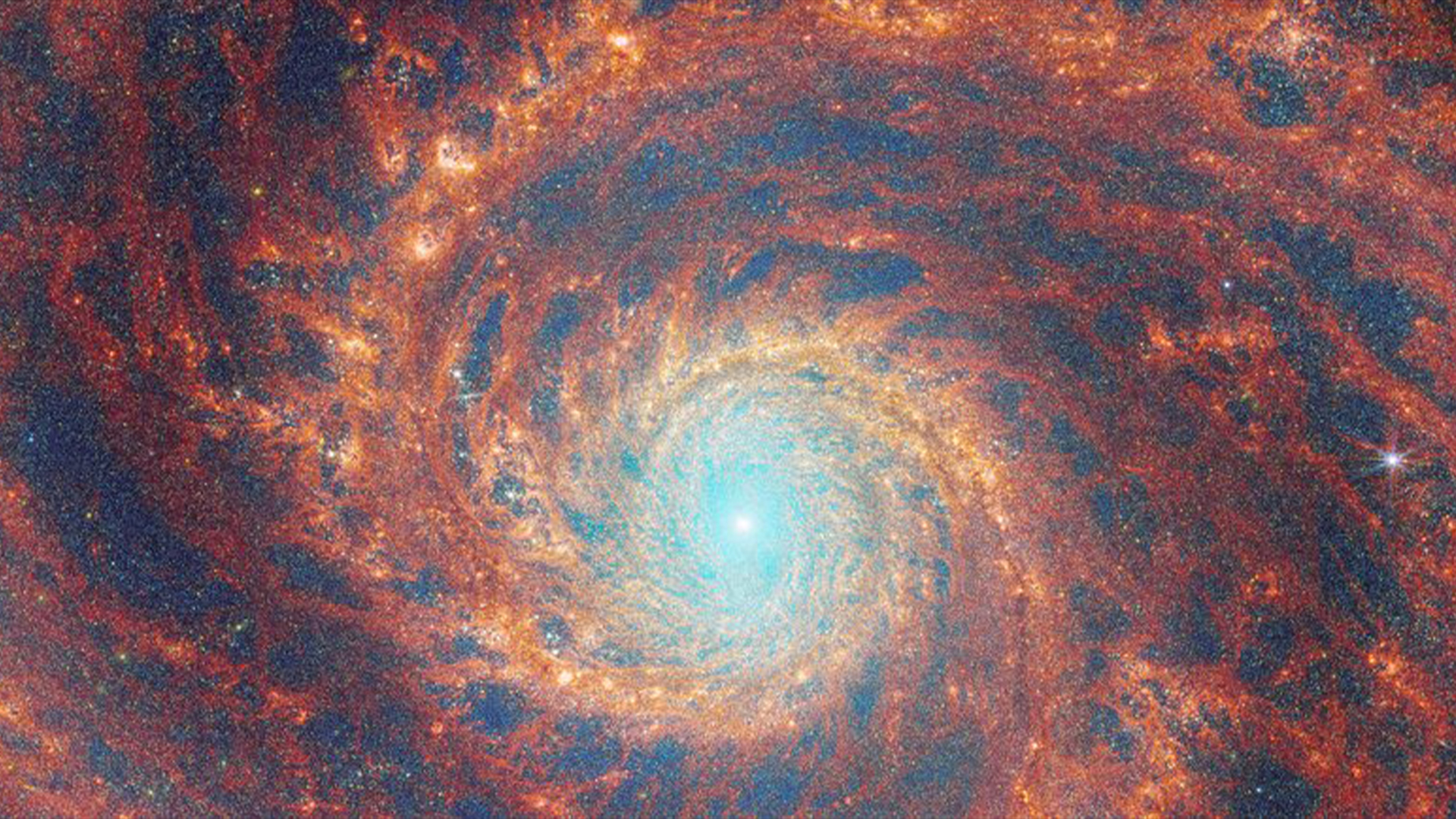Space photo of the week: James Webb sees the Whirlpool Galaxy in a new light
James Webb Space Telescope shows new star clusters forming in one of the best-looking "grand-design" spiral galaxies in the night sky.

What it is: The Whirlpool Galaxy (also known as M51 and NGC 5194), a classic "grand design" spiral galaxy that measures 77,000 light-years from one side to the other.
Where it is: 27 million light-years from the solar system in the constellation Canes Venatici, just below Ursa Major.
Why it's so special: A completely fresh take on a classic and much-photographed deep sky object, this brand new image from the James Webb Space Telescope (JWST) shows star clusters forming in the Whirlpool Galaxy for the first time.
JWST’s new image shows a bright, pale blue eye-like core at the center of a 3D-like image that resembles a tunnel or water circling a drain — hence the name "whirlpool". The concentric circles are deep orange filaments of dust with empty regions within. Yellow spirals reveal gas ionized by the recently formed clusters of stars. These are unique views only possible because of JWST’s infrared capabilities.
The stunning image — which combines infrared light captured for the first time by JWST’s Near-InfraRed Camera (NIRCam) and Mid-InfraRed Instrument (MIRI) — is the result of observations by a project called Feedback in Emerging extrAgalactic Star clusTers (FEAST). It's an attempt to understand something called stellar feedback — the energy stars inject into their surroundings as they form, thus helping to create more stars.
The Whirlpool Galaxy is a spiral galaxy a lot like our own Milky Way, and has been studied again and again by astronomers largely because of its stately appearance. Not only do astronomers have a perfect line of sight to see it face-on, but it's also interacting with a dwarf galaxy very close by called NGC 5195, which can be more easily seen in visible light images taken by the Hubble Space Telescope. It's thought that the gravitational influence of NGC 5195 could be partially responsible for the Whirlpool Galaxy's vast and perfect-looking spiral arms.
How to see it in the night sky: The Whirlpool Galaxy is not only one of the easiest galaxies to see from the Northern Hemisphere, but it's also one of the grandest. It's located roughly between the star Alkaid, at the end of the Big Dipper's handle, and Cor Carol in nearby Canes Venatici. It's best seen in spring from the Northern Hemisphere using any good telescope, through which you'll also see NGC 5195 and the chain of stars linking the two objects.
Sign up for the Live Science daily newsletter now
Get the world’s most fascinating discoveries delivered straight to your inbox.

Jamie Carter is a freelance journalist and regular Live Science contributor based in Cardiff, U.K. He is the author of A Stargazing Program For Beginners and lectures on astronomy and the natural world. Jamie regularly writes for Space.com, TechRadar.com, Forbes Science, BBC Wildlife magazine and Scientific American, and many others. He edits WhenIsTheNextEclipse.com.










